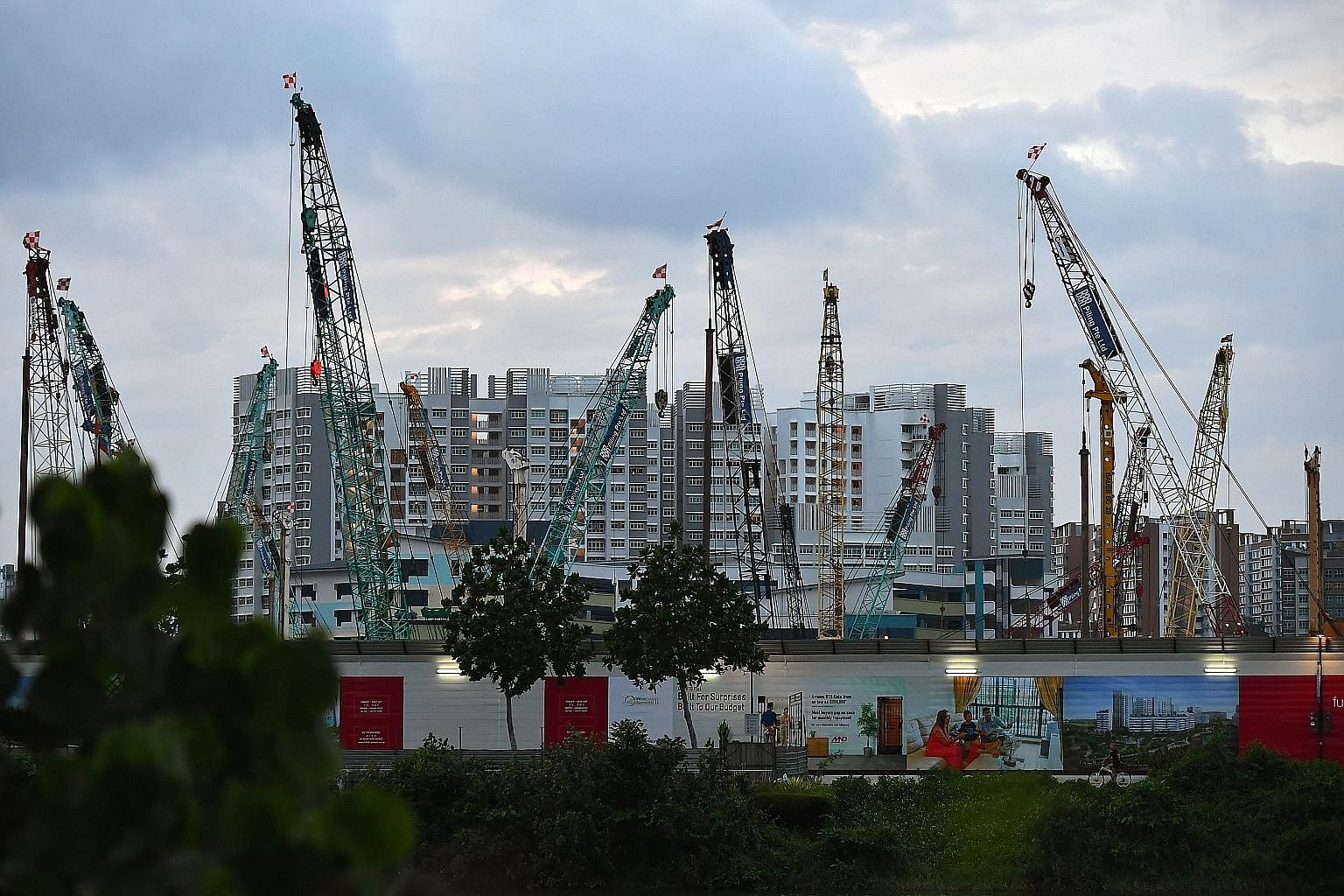Construction demand in 2018 is expected to exceed that of last year, but companies think it is too early to celebrate.
After all, the Building and Construction Authority's (BCA) final figures dipped below its projections for three years in a row.
Last year saw the biggest gap in expectations, with only $24.5 billion in projects being awarded. The BCA, which predicted demand to be between $28 billion and $35 billion, attributed the difference to the rescheduling of a few major public-sector infrastructure projects. For example, the North-South Corridor was postponed to this year.
This year's projected demand was also revised downwards, from $26 billion to $35 billion earlier, to $26 billion to $31 billion yesterday.
The public sector will fuel about 60 per cent of demand this year, with $16 billion to $19 billion worth of projects to be awarded. This is a reversal of roles compared with the period of 2012 to 2013, when the private sector contributed the lion's share with its seemingly insatiable thirst for new homes. Construction demand was also higher then, ranging from $30.8 billion to $38.8 billion over that period. But significant cooling measures introduced in 2013 soon put paid to that, and public-sector projects have increasingly taken up the bulk of construction demand since.
While the Government has traditionally been a big spender for the sector here, the question is whether it can do enough to keep a flagging industry going until the next boom.
Large-scale public-sector projects are complicated and require longer preparation times. As a result, when they come onstream can be delayed, owing to their complexity. This was the reason cited by BCA for the lower-than-expected construction demand in 2017, 2016 and 2015.

Also, the bulk of public-sector projects tend to be civil engineering work - infrastructure projects that often go to larger foreign players.
Recognising this, the Government has stated that it intends to parcel out large infrastructure projects into smaller chunks, which could create more opportunities for local players.
The public sector is a necessary part of the ecosystem, without which there is no way to stimulate demand, said Singapore Contractors Association president Kenneth Loo, adding that even then, many firms have either folded or consolidated in recent years as a means to deal with excess capacity.
The good news is that there are signs the construction slump may be ending. The collective-sale boom last year alone could produce some $3.6 billion in private residential projects this year.
National University of Singapore urban planning expert Steven Choo said the last few years' dependence on public-sector projects - and the lower-than-expected demand - should not pose a worry.
"There were no iconic projects that 'die-die' had to be built in the last few years, so there's going to be a few slow patches for the industry," he said. "But on the whole, there should not be any alarm. There is more than enough to build for the next 15 years - this little island never stops improving."

